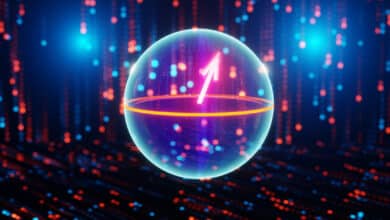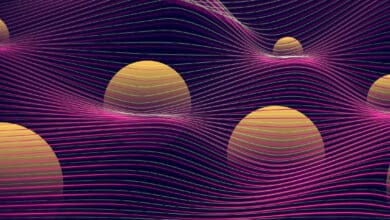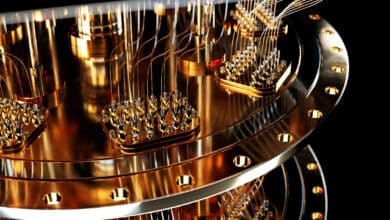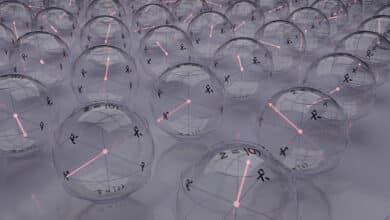Quantum Computing Modalities: Neutral Atom (Rydberg)
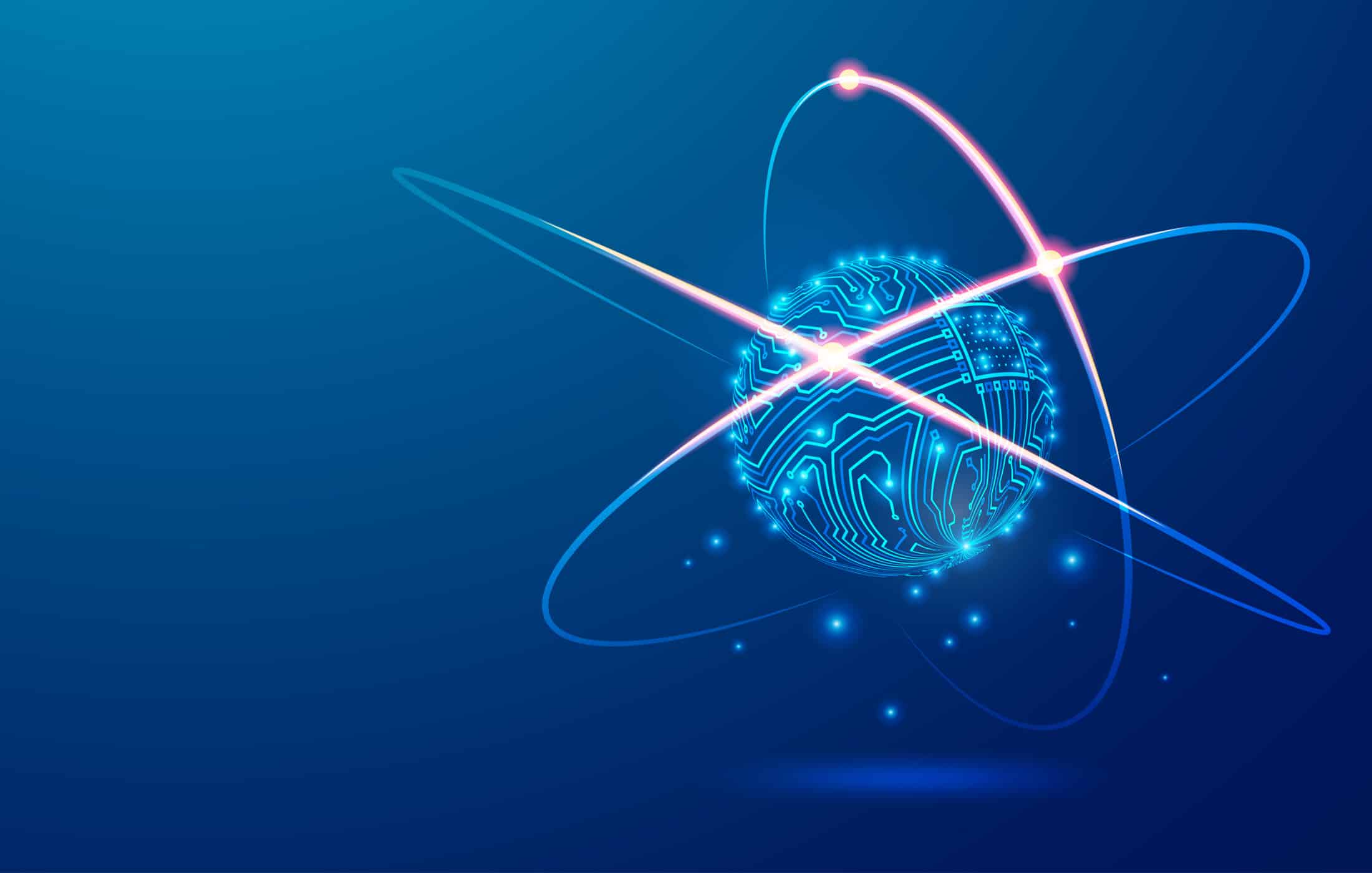
Table of Contents
(For other quantum computing modalities and architectures, see Taxonomy of Quantum Computing: Modalities & Architectures)
What It Is
Neutral atom quantum computing uses uncharged atoms (as opposed to ions) trapped by light in an array, with qubits encoded typically in atomic states. A popular approach is to use optical tweezers (focused laser beams) to trap arrays of neutral atoms (like rubidium or cesium). These atoms have internal states (usually hyperfine ground states) that serve as |0⟩ and |1⟩, similar to ion qubits. The key mechanism for entangling neutral atom qubits is to excite atoms to highly excited electronic states called Rydberg states. Rydberg atoms have extremely large electric dipole moments and interact strongly with each other at distances of a few micrometers, an effect known as Rydberg blockade: an excited Rydberg atom shifts the energy levels of nearby atoms, preventing them from being excited simultaneously. This blockade can be exploited to create two-qubit gates (like a controlled-Z or controlled-not) between atoms by laser pulses that rely on this “one atom or the other can be excited, but not both” phenomenon.
Neutral atom QC is somewhat a hybrid of ion traps and photonics: atoms are discrete qubits like ions, but they are controlled by lasers and can be arranged in 2D (like pixels) by optical systems. They don’t require charged confinement (so no RF trap electrodes), making it easier to create scalable arrays (hundreds of optical tweezers can be made with spatial light modulators or diffractive optics). Companies like Pasqal (France) and QuEra (USA) are pursuing neutral atom processors; Pasqal has demonstrated 100+ atom analog quantum simulations, and QuEra has a 256-atom analog quantum simulator (focused on quantum annealing/simulation tasks for now). Neutral atoms can be used for digital gate-based computing (with Rydberg gates) and also for analog quantum simulation (by tuning interactions between atoms in different geometries, akin to a quantum “Ising model” machine).
Key Academic Papers
One early theoretical proposal for a neutral-atom two-qubit gate was by D. Jaksch et al., “Fast Quantum Gates for Neutral Atoms”. This paper outlined how Rydberg excitation and blockade could implement a controlled phase gate between atoms using nanosecond laser pulses. It basically established the theoretical underpinning that Rydberg blockade yields a conditional phase of $$\pi$$ when one atom’s excitation prevents the other’s. A paper by Lukin et al. (2001) also discussed dipole blockade and entanglement of neutral atoms via Rydberg states. Experimentally, the first observation of Rydberg blockade was around 2009, and by 2010–2012, groups (like the Harvard group of Mikhail Lukin and the Wisconsin group of Mark Saffman) demonstrated entanglement of two neutral atoms using Rydberg interactions. In 2010, Saffman’s group reported a two-atom CNOT gate with ~58% fidelity (not high, but it was a proof of concept). The fidelity climbed with better laser control, and by 2020, Rydberg gate fidelities exceeding 97% have been reported (e.g., in certain optimized setups). A key academic milestone: in 2016, Endres et al. managed to assemble defect-free 2D arrays of 50 atoms with optical tweezers by dynamically rearranging them – solving a big issue of loading randomness. That technique is now standard: randomly load ~100 traps with atoms at ~50% filling, then move atoms around to fill a target shape with no holes. This gives a starting register of, say, 100 atoms in a chosen geometry (line, grid, etc.) – a big win for scalability.
How It Works
Trapping and Initializing: Neutral atoms (e.g., Rubidium-87) are cooled with magneto-optical traps to microKelvin temperatures and then loaded into tightly focused laser beams (optical tweezers) which hold the atoms by optical dipole forces. Each tweezer typically holds at most one atom (via collisional blockade or light-assisted collisions causing two atoms to eject until one remains). The arrangement of tweezers can be 1D, 2D (or even 3D in future) – currently, 2D arrays of 50–300 traps are demonstrated. Atoms are then further cooled by optical methods (Raman sideband cooling sometimes) to near the 3D ground state of the trap to reduce motion (not as crucial as for ions because trap is not oscillating, but helps consistency). The qubit states are two hyperfine ground states, e.g., |0⟩ = $$|F=1, m_F=0\rangle$$, |1⟩ = $$|F=2, m_F=0\rangle$$ in Rb or Cs. These are like stable “clock states” separated by GHz frequency, which can be driven by microwaves or two-photon Raman lasers for single-qubit rotations. Typical single-qubit X or H gates are done by resonant microwave fields or a two-photon Raman transition; fidelities can be very high (error $$<10^{-4}$$) because it’s similar to atomic clock transitions.
Two-qubit gate via Rydberg blockade: To entangle two atoms (say atom A and B separated by a few micrometers), the protocol often used is: (1) Excite atom A’s qubit state |1⟩ to a Rydberg state |r⟩ using a laser (|0⟩ stays put). (2) Apply a laser pulse to atom B attempting to excite it from |1⟩ to |r⟩. If atom A was in |1⟩ and thus got excited to |r⟩, it shifts B’s transition off resonance (blockade), so B cannot be excited – effectively nothing happens to B if A was |1⟩. If A was |0⟩ (not excited), then B’s pulse will excite it to |r⟩ (if B was in |1⟩). (3) Then a pulse on atom B to de-excite it back to |1⟩ (imparting a phase if it went up and down). (4) De-excite atom A back to |1⟩. Through this sequence, a controlled phase is accumulated on the |1,1⟩ state only (because if both were |1|1, A’s excitation prevented B’s excitation, leading to a phase difference relative to the case when B would have been excited). Essentially, the |1,1⟩ state gets a different evolution than others, yielding a CZ gate. The exact sequence can vary, some use a two-pulse controlled rotation approach. But conceptually, Rydberg blockade ensures that a single Rydberg excitation acts as a “blocker” for nearby atoms. The blockade radius (distance within which this effect holds) can be 5–10 micrometers for typical Rydberg levels, which corresponds nicely to spacings in optical arrays.
The blockade mechanism is fast: Rydberg excitation can be done in tens of nanoseconds to a few hundred ns. So gates can be on the order of microseconds including all steps – much faster than ion gates (though not as fast as superconducting still, but bridging the gap). Coherence of Rydberg states is not as long as ground states (they have lifetimes maybe in tens of microseconds to 100 µs before they spontaneously decay, though some states have longer if using coherence only). But since they’re only occupied during the gate, that’s manageable.
Measurement: Typically done by fluorescence imaging – similar to ions, shine resonant light that causes one of the hyperfine states (say |1⟩) to fluoresce (cycling transition) and the other (|0⟩) to be dark (e.g., because of a different hyperfine that the light doesn’t address). Then use a camera or photomultiplier to detect light from each atom’s position. This allows reading out each qubit as 0 or 1 with decent fidelity (around 98-99% currently, limited by atom loss or off-resonant scattering causing mixing). The measurement is slower (ms) because collecting enough photons for camera imaging takes some time, but new EMCCD or CMOS SPAD array cameras are improving that.
Comparison To Other Modalities
Neutral atom qubits share some similarities with trapped ions – both use atomic energy levels for qubits, giving long coherence and high fidelity single-qubit ops. But unlike ions, neutral atoms have no charge, so they don’t naturally couple to each other strongly unless excited to Rydberg states. The on-demand coupling via Rydberg excitation is both an asset (one can turn interactions on/off with laser control, and it can be long-range coupling not just nearest neighbor) and a complexity (Rydberg states are short-lived and require high-power lasers in UV in some cases).
In terms of scaling, neutral atoms are very promising: using optical traps, people have already scaled to hundreds of qubits in 2D arrays. This is more than any other gate-based platform at present (for context, as of 2023 QuEra had a 256-atom analog quantum simulator; though in gate mode, only smaller subsets have been used so far for algorithmic demonstration). The spacing can be small (a few micrometers), so in a mm-sized area one can fit thousands of atoms. Moreover, arrays can be rearranged and even moved during computation if needed (some experiments move atoms around to implement dynamic circuits, though typically they remain static during gate operations).
Compared to superconducting qubits, neutral atoms have slower gate speeds (microseconds vs nanoseconds) but way longer coherence (coherence times of seconds in hyperfine states) – you can even physically keep an atom idle in state for many seconds (some experiments used atoms as quantum memory for minutes by using magnetic field or spin-echo to preserve states). That means one can, in principle, perform many more operations per coherence time. Also, unlike fixed superconducting qubits with limited connectivity (usually nearest neighbor couplings on a chip), neutral atoms can in principle entangle any pair in an array by choosing which two to address with Rydberg pulses (assuming the distance is within blockade range or one can do multiple hops). Even if farther than blockade, one could move atoms or use an intermediary.
Compared to trapped ions, neutral atoms don’t have global motional modes tying them together – interactions are more local (blockade typically only covers nearest neighbors in the array or within a certain radius). However, one can engineer interactions in parallel across many pairs by targeting many atoms at once with lasers (for example, one can apply a global Rydberg laser to all atoms which implements a sort of global Ising-like interaction field). One big advantage: neutral atom systems can be parallelized – you could, in principle, excite multiple disjoint pairs of atoms to Rydberg states simultaneously if they are far enough apart not to cross-blockade. This allows parallel two-qubit gates, something ion chains struggle with because any entangling pulse on one pair also affects collective motion which can affect others.
Another advantage is reconfigurability: optical tweezers can reposition atoms, enabling different connectivity graphs for different problems. Ion traps by contrast have a fixed linear order (unless doing complex shuttling) and superconducting have fixed wiring.
Compared to photonic qubits, neutral atoms are definitely “stationary” qubits but still manipulated by light – perhaps not a direct comparison except that neutral atoms might achieve some things photonics tries to do, but with matter reliability (like one can create cluster states of atoms that are easier to maintain than cluster of flying photons, and then maybe transfer to photons when needed).
Current Development Status
Neutral atom quantum devices are advancing quickly. Here are some highlights:
Multi-qubit features: A cool feature of Rydberg systems is the possibility of multi-qubit entangling gates – e.g., one Rydberg excitation can simultaneously block multiple neighboring atoms, producing a GHZ state in one step, etc. There’s concept of “quantum fan-out” gates or multi-controlled gates that could be easier in this platform. Also, neutral atoms can be entangled not only by pairwise blockade but also via mediated interactions (like coupling to a cavity mode or using Rydberg dressing for analog interactions where atoms get partial Rydberg character and thus continuous interactions).
Qubit count: In 2016, Harvard and Caltech groups showed ~50 atom arrays; by 2020, Harvard/MIT (QuEra founders) showed 256-atom arrays in a programmable quantum simulator (using Rydberg interactions to simulate Ising models). Pasqal has reported 200+ atom arrays as well. These large arrays were used in analog mode (i.e., preparing certain initial states and letting a many-body evolution occur by turning on Rydberg interactions globally, then measuring final state to get solutions to optimization problems like Max Independent Set on graphs). As gate-based computers, the qubit counts used are smaller (for instance, a 2020 paper by Browaeys’ group in France demonstrated a three-qubit quantum algorithm using 3 Rydberg atoms, as a proof of concept of quantum gate operations). But scaling gate operations to dozens is ongoing. There’s a 2022 result of a 6-qubit GHZ state generated with Rydberg gates at >0.6 fidelity, showing multi-qubit entanglement.
Companies & prototypes: Pasqal is focusing on near-term quantum simulation and annealing applications with their 100-200 atom analog processor, and planning to implement digital gates too. QuEra Computing similarly starts with analog quantum simulation (their machine is accessible on Amazon Braket for researchers, 256 atoms). They plan a 64-qubit fully programmable gate-based machine by 2025. ColdQuanta (US) / now called Infleqtion, is working on neutral atom tech with rubidium, focusing on both computing and quantum memory. Another startup Atom Computing initially was using nuclear spins of neutral strontium as qubits (so not Rydberg gating, but rather a different scheme using long-lived nuclear spin states and possibly exchanging interactions – they had a 100-atom array but no entanglement shown publicly early on). They have pivoted to also consider Rydberg gates now. Microsoft’s quantum project has also quietly done research on neutral atoms (they hired some experts, possibly as a hedge to their topological approach). On the academic front, many groups worldwide (Paris, Wisconsin, Harvard, MIT, Caltech, Oxford, Innsbruck, etc.) are pushing Rydberg quantum computing.
Current performance: Single-qubit gates in neutral atoms are excellent (fidelities > 99.9% reported). Two-qubit Rydberg gate fidelities are improving; around 2019, fidelity ~97% was shown in one lab over small distances. Error sources include laser phase noise, Rydberg state decay, and laser focusing issues. Coherence: ground state qubits have T2 coherence times of several seconds with echo, so that’s not limiting in short term. The Rydberg-mediated entanglement currently has short coherence (since Rydberg might only remain coherent for microseconds), but you only need it coherent during the gate (microsecond). If gate is done faster than Rydberg coherence limit, it’s fine. Researchers are exploring using two different Rydberg levels to reduce some technical noise, and using improved laser systems.
Multi-qubit features: A cool feature of Rydberg systems is the possibility of multi-qubit entangling gates – e.g., one Rydberg excitation can simultaneously block multiple neighboring atoms, producing a GHZ state in one step, etc. There’s concept of “quantum fan-out” gates or multi-controlled gates that could be easier in this platform. Also, neutral atoms can be entangled not only by pairwise blockade but also via mediated interactions (like coupling to a cavity mode or using Rydberg dressing for analog interactions where atoms get partial Rydberg character and thus continuous interactions).
Advantages
- Scalability in 2D: Arguably the best physical scalability among qubit platforms so far: hundreds of qubits in a 2D plane with full control is very impressive. Extending to a thousand traps is conceptually straightforward by improving optical systems. The neutral atom approach might be the first to cross the 1000-qubit mark in a laboratory (though at that scale probably analog mode; getting all to do gates is another step).
- Long coherence and high fidelity potential: Using stable atomic states as qubits ensures low intrinsic error. Because atoms are identical and only controlled by laser parameters, the system is uniform and can leverage decades of atomic physics knowledge (much like ions do). Error rates for certain operations are already at or near the threshold for error correction (some proposals suggest with 99% two-qubit gate fidelity and 1000 qubits, one could do some QEC).
- Fast entanglement and flexible geometry: Rydberg gates are relatively fast entanglement sources (few MHz gate speed). And one can entangle atoms that are not immediate neighbors by using a moving tweezer or just having them close enough in the array (like next-nearest neighbors if within blockade range can interact). Also one can reconfigure which atom pairs interact by selective laser targeting. The geometry can match the problem (line, grid, graph structure, etc.), possibly reducing overhead for certain algorithm mappings.
- Avenues for analog quantum simulation: Even without perfect gates, neutral atom arrays can do useful analog simulations of physics or solve optimization problems by adiabatic evolution. E.g., mapping Max-Cut or independent set problems to Rydberg blockade configurations (a Rydberg atom can represent a vertex “chosen” in a subset and blockade ensures no two adjacent vertices can both be chosen, naturally encoding independent set with laser detunings controlling the optimization). Pasqal and QuEra leverage this as a near-term application. This analog capability is a bonus beyond the gate model – providing a testbed for quantum simulation algorithms earlier.
- Minimal infrastructure per qubit: Each atom doesn’t need individual wires or control electrodes; all control is via a few global laser beams and some steering of lasers. This is lightweight compared to having, say, control lines on a chip for each qubit (which in superconductors become a rat’s nest of wiring as number grows). In atoms, adding another qubit is just focusing another laser tweezer – the complexity grows more in controlling lasers in parallel rather than physically building more hardware connections.
Disadvantages
- Lasers and optical stability: The technology requires very precise lasers (frequencies for Rydberg transitions are often UV for alkali atoms, e.g. 297 nm for Rb 70s Rydberg state or around 480 nm for another step, often a two-photon excitation is used). High-power UV lasers are expensive and can cause technical noise. Also, beam alignment and calibrations for many sites can be complex. Optical traps can introduce differential light shifts on qubit states that need calibration or mitigation (e.g. magic wavelengths). In summary, it’s an AMO (atomic, molecular, optical) experiment scaled up, with all the associated complexity in optics and laser control.
- Rydberg state lifetime and gate fidelity ceiling: The Rydberg states might limit fidelity – currently ~99% fidelity gates might be typical, but pushing beyond 99.9% might be hard without better lasers or techniques, due to spontaneous emission from Rydberg state and laser phase noise. Also, if trying to do many gates in sequence, error might compound. Achieving error rates needed for effective error correction (<0.1% perhaps) is a challenge being worked on.
- Crosstalk and blockade radius issues: If atoms are too close, unwanted blockade can occur causing crosstalk between qubits that are not meant to interact. If too far, intended interactions might fail. So spacing and controlling exactly which atoms get Rydberg pulses is crucial. With hundreds of atoms, ensuring that only the intended ones interact and others remain unaffected can be tricky. Some pulses might inadvertently off-resonantly affect neighbors slightly, causing errors.
- Limited connectivity (local interactions): While connectivity is reconfigurable to an extent, at any given time the blockade typically links atoms within a physical radius. That often means effectively a grid connectivity (each atom interacts with those within ~1-2 site distance in practice). Achieving arbitrary all-to-all interactions requires either moving qubits or multi-step swaps. Ion traps have an advantage in connectivity in a small chain (all-to-all via modes), but become harder to scale in number; neutral atoms have easier number scaling but inherent locality (like a 2D grid which might behave like a 2D nearest-neighbor connectivity graph for gates if blockade only reaches nearest neighbors – though one can choose which neighbors by turning on specific pairs sequentially or use larger blockade radius with stronger lasers to get next-nearest neighbors).
- Readout fidelity limited by atom loss: Imaging atoms can sometimes cause them to be lost from traps (the fluorescence process can impart momentum or heating). If an atom is lost, that qubit is gone (though one could potentially reload an atom between runs, but not during a computation). Current readouts ~98-99% in a single shot mean ~1-2% chance of losing a qubit or misidentifying it – that needs to be improved for large circuits or error correction (where many measurements are done – repeated measurements might blow up error). There is work on nondestructive readout schemes (like measuring a Raman transition that doesn’t kick the atom out).
Impact on Cybersecurity
Neutral atom quantum computers, if scaled to large error-corrected sizes, will have the same capability to run algorithms like Shor’s. Their timeline might be similar or slightly behind superconducting/ion in terms of maturity, but the rapid scaling of number of atoms could surprise us. If QuEra or Pasqal pivot fully to digital and manage a few hundred qubits with moderate fidelity, they might crack problems that challenge classical computing (though likely physics simulation ones first). For cryptography, one would need thousands of qubits and error correction. Given the long-term coherence, one could argue neutral atoms might ultimately require fewer physical qubits per logical qubit (if they achieve moderately good gate fidelity, the high coherence helps run longer QEC circuits). But these are speculation. Right now, neutral-atom devices are at the “quantum simulator” phase – not yet breaking any crypto or running Shor’s algorithm beyond trivial small numbers. However, the threat timeline logic remains: multiple modalities are maturing, and neutral atoms could accelerate the arrival of a CRQC (Cryptographically Relevant Quantum Computer) if progress continues. Governments and companies in Europe (where Pasqal is) and the U.S. see this as one of the viable paths; thus, they too motivate the transition to PQC (post-quantum cryptography).
One specific note: neutral atoms have also been considered for quantum side-channel attacks in the sense that they can simulate e.g. AES S-boxes as Ising problems or do annealing for some cryptoanalysis tasks. However, nothing suggests they can break symmetric ciphers better than Grover’s algorithm (which is the same on any universal QC). So the main concern is still Shor’s on asymmetric cryptography.
Future Outlook
Neutral atom quantum computing is an emerging dark horse that could become a dominant approach in the 2030s if current growth continues. In the near term (next ~3 years), expect demonstrations of small algorithms (like quantum variational algorithms, small error-correction codes) on systems of, say, 10–20 atoms with full gate control. Also, analog simulations with 200+ atoms will tackle larger and more complex many-body physics problems (like simulating spin models, perhaps probing quantum phases that classical methods find hard). By late 2020s, companies plan to have >100 gate-based qubits and error rates approaching thresholds for QEC. If they can hit, say, 99.9% two-qubit fidelity on 100 qubits, they might attempt some quantum advantage tasks (like solving a specific optimization problem faster than classical approximations).
One interesting direction is combining neutral atoms with other systems: For example, using neutral atoms as quantum memories connected by photons (quantum network architecture). Or interfacing neutral atoms with superconducting microwave resonators (some proposals to have atoms as long-lived memories that couple to a microwave photon bus, bridging optical and microwave domains).
The timeline to break RSA with neutral atoms might not be the earliest, but they could contribute to intermediate milestones like simulating new materials or molecular dynamics which have economic value (not directly cybersecurity but broad impact). For cryptographers, the existence of multiple viable hardware platforms including neutral atoms only solidifies the certainty that quantum computing is not a single-thread effort that might fail – many paths are being pursued, so one succeeding is highly likely.
In summary, neutral atoms with Rydberg interactions provide a highly scalable, relatively fast and coherence-friendly platform that’s quickly catching up. They blend some of the best of ions (quality) and superconductors (scaling) and photonics (parallelism). With big players investing, they could become one of the major modalities in the quantum computing landscape, potentially delivering both near-term analog quantum advantages and long-term fault-tolerant machines.
